An important factor affecting email deliverability is the sender’s reputation. Sender reputation is a set of parameters for assessing the infrastructure for sending letters, the quality of mailings and user interaction with them. There is no common reputation assessment formula for all mail providers, but there are several key parameters that you need to monitor. To get the appropriate reputation on the side of email services, you need to warm up your domain.
How to Warm Up a Domain?
When preparing for mailing from a new domain that does not yet have a reputation, it is necessary to warm up the domain. You should start with the correct configuration of domain mail: selecting the sending domain and entering the SPF-record and DKIM-record if your domain is not delegated to GetCourse servers. After that, you can start mailing, guided by the following rules:
— send the first mailing to no more than 1000-3000 addresses per day;
— prolong the sending of this volume of letters for two or three hours so that the letters are sent evenly (for such way of sending, GetCourse also provides throttling);
— increase daily sending volumes by approximately 30% as of yesterday;
— send mailings regularly (daily), preferably at the same time;
— take daily statistics on openings, clicks, complaints and data from the Postmaster. If the indicators drop — roll back to the beginning and send again in very small volumes.
Thus, you will gradually teach the mail platforms that letters on your behalf sent from these IP addresses is a normal situation, and it should be so. The most important thing during warming up is to evenly and constantly increase the volume of mailings and monitor the performance indicators.
Table of recommended mailings sending volumes by days
| Day of warmup | Letters per hour limit | | | Day of warmup | Letters per hour limit |
| 0 | 20 | | | 16 | 4 356 |
| 1 | 28 | | | 17 | 6 098 |
| 2 | 39 | | | 18 | 8 583 |
| 3 | 55 | | | 19 | 11 953 |
| 4 | 77 | | | 20 | 16 734 |
| 5 | 108 | | | 21 | 23 427 |
| 6 | 151 | | | 22 | 32 798 |
| 7 | 211 | | | 23 | 45 917 |
| 8 | 295 | | | 24 | 64 284 |
| 9 | 413 | | | 25 | 89 998 |
| 10 | 579 | | | 26 | 125 997 |
| 11 | 810 | | | 27 | 176 395 |
| 12 | 1 000 | | | 28 | 246 953 |
| 13 | 1 587 | | | 29 | 345 735 |
| 14 | 2 222 | | | 30 | 484 029 |
| 15 | 3 111 | | | 31 | 677 640 |
What does the sender reputation consist of?
The technical parameters of the mailing infrastructure include:
the sending domain is the actual domain from which the sending occurs. For GetCourse, this is the domain that your domain mail is configured to:
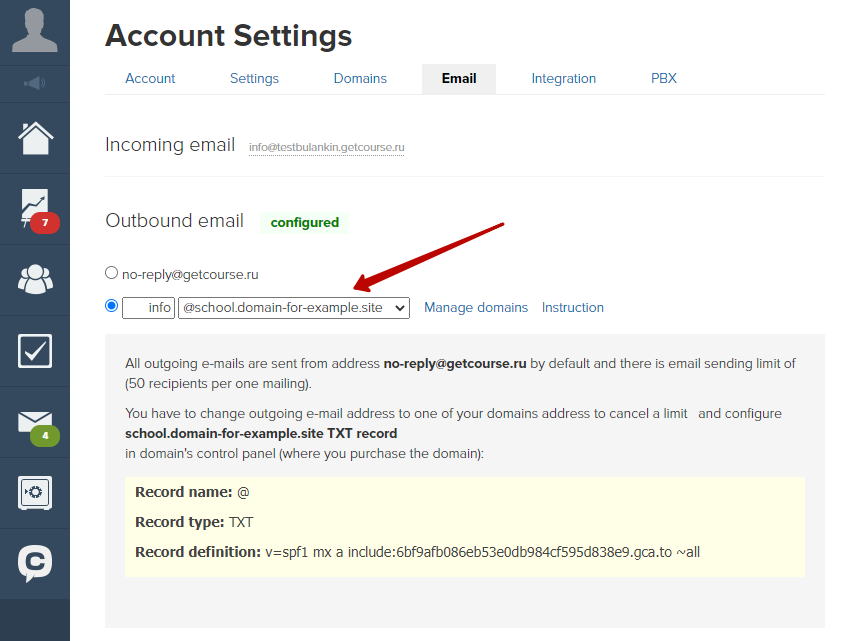
sending IP addresses. GetCourse assigns them automatically, or you can order a dedicated IP for your mailings;
DKIM key that the mailings are signed with. When setting up domain mail on GetCourse, this parameter is also configured on the side of your hoster. If the domain is delegated to GetCourse servers, you do not need to register DKIM individually;
domains indicated in the body of the letter. You can verify domains using the internal mailing list analyzer. With it, you can see if your letter contains a mention of domains that have been blacklisted by any services:
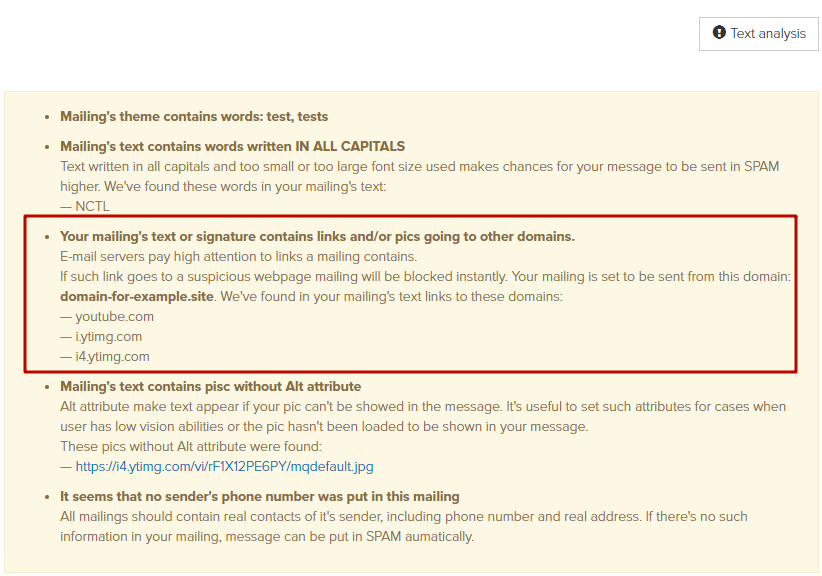
In addition to technical parameters, when calculating the reputation, qualitative interaction of users with mailings is also evaluated:
spam complaints. It is better not to exceed 0.4-0.5% complaints quantity from the total number of letters. Strongly negative impact is one of the key parameters in assessing the quality of sender mailings. You can view the number of spam complaints on the GetCourse side, and also use third-party services (for example, Postmaster);
- Delivery errors. It is better not to exceed 1-3% errors quantity in the total number of messages. The parameter shows the mail provider how you monitor the quality of your recipient list and whether you clear it from outdated and non-existent addresses. In the statistics of mailing delivery on GetCourse, you can see how many letters were not delivered due to errors.

In order to avoid cases of sending to addresses that do not exist or are incorrectly specified by users, you can use the mailing list settings by sending letters only:
to addresses that knowingly exist — the address in the system to which at least one letter was previously sent is considered to be an existing address in the system, and this letter was viewed by the user.
to addresses where permission for mailing is given — the letter will be sent only to those users who explicitly allowed sending letters using Double-Opt-In.
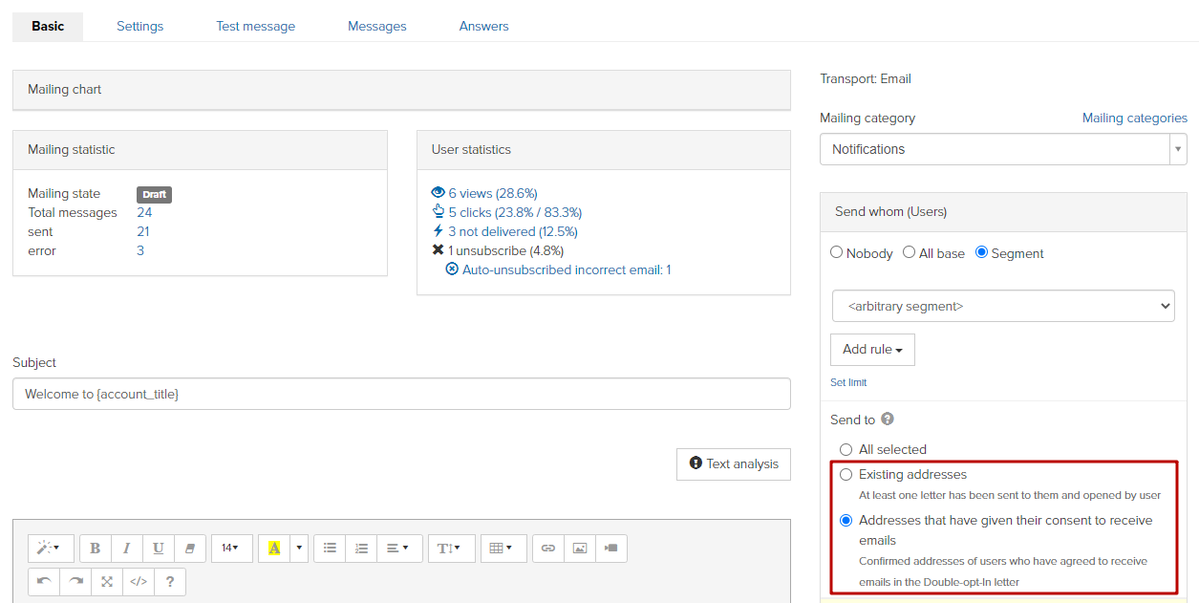
GetCourse also provides for automatic unsubscribing from user mailings with non-existent addresses. If the address is determined to be incorrect automatically, then messages will no longer be sent to this user.

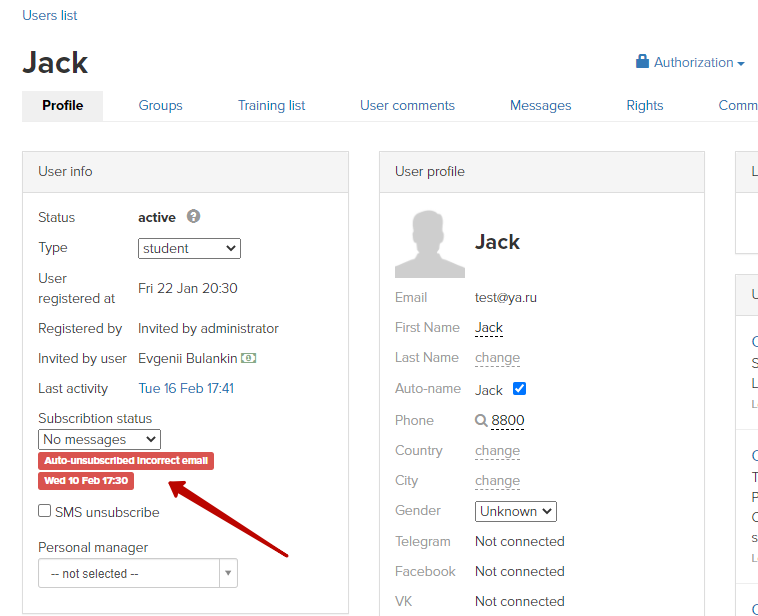
- Openings and clicks in the letter — the higher this indicator is, the better. You can track such statistics for each letter on the GetCourse side.
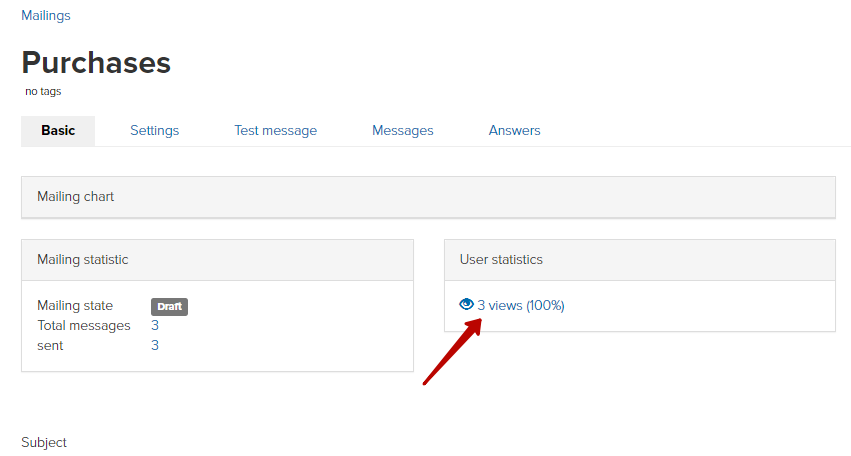
- Deleting of letters — before reading (just from the list of letters) and after reading. The lower the indicator, the better. You can see such statistics, for example, on the Postmaster side.
- The response to the message is a very positive factor, it shows the recipient’s high interest in the mailings. You can view this indicator in the statistics of the mailing on the GetCourse side.

The presence of spam traps in the database. Typical cases of spam traps in the database of subscribers:
— mailing on the purchased database;
— mailing to an irrelevant database with outdated addresses;
— mailing to addresses with typos.
In order to avoid such spam traps in the list of subscribers, you can use the following measures:
— Double Opt-In letter confirming the user’s email address;
— clearing the database of purchased lists and irrelevant addresses;
— sending mailings only to existing addresses.
We use technology such as cookies on our website to personalize content and ads, provide media features, and analyze our traffic. By using the GetCourse website you agree with our Privacy Policy and Cookies Policy.

please authorize